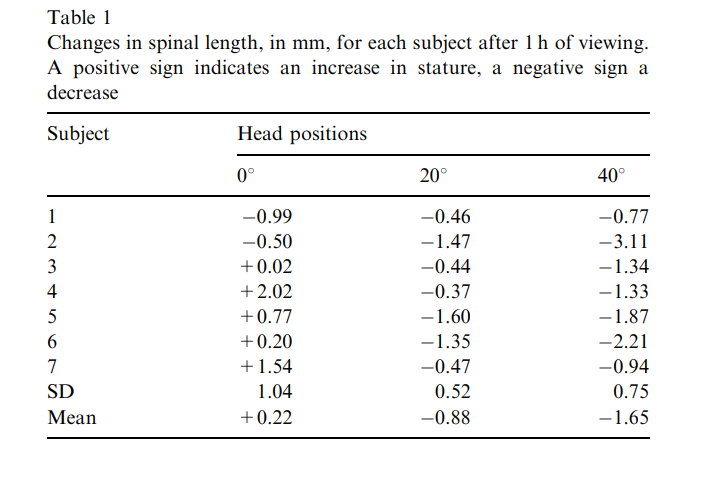Cardarine has been used by bodybuilders and is linked to height growth. Cardarine is a PPAR Delta agonist(activator).
PPARDelta has been linked to height. From A single nucleotide polymorphism on exon-4 of the gene encoding PPARdelta is associated with reduced height in adults and children. “compelling evidence was found for this locus and its association with height (P = 10(-8)) with an overall effect size of about 0.5 cm per allele{1cm total}.” It’s possible that the effects of PPARdelta are biphasic where there is an equilibrium amount to maximize height and too little or too much reduces height or that there is a minimum amount of PPARDelta activation that is needed for height and that any further has no effect. The authors speculate that PPARDelta may affect height via metabolic efficiency or via affects on osteoclast function. Metabolic efficiency would have no effect on height as an adult but there is potential if it affects osteoclast function as degradation of bone would be a needed step to grow taller as an adult as it would both make the bone more susceptible to plastic deformation and allow for tissues that are capable of interstitial growth to take the place of bone.
Obviously, 1 cm in height is not going to break the bank in terms of increasing height while skeletally immature but if a PPARdelta agonist can increase osteoclast activity that can be used as part of a height increase routine.
Here’s the studies that says PPAR affects osteoclasts
“Osteoclasts modulate bone resorption under physiological and pathological conditions. Previously, we showed that both estrogens and retinoids regulated osteoclastic bone resorption and postulated that such regulation was directly mediated through their cognate receptors expressed in mature osteoclasts. In this study, we searched for expression of other members of the nuclear hormone receptor superfamily in osteoclasts. Using the low stringency homologous hybridization method, we isolated the peroxisome proliferator-activated receptor delta/beta (PPARdelta/beta) cDNA from mature rabbit osteoclasts. Northern blot analysis showed that PPARdelta/beta mRNA was highly expressed in highly enriched rabbit osteoclasts. Carbaprostacyclin, a prostacyclin analogue known to be a ligand for PPARdelta/beta, significantly induced both bone-resorbing activities of isolated mature rabbit osteoclasts and mRNA expression of the cathepsin K, carbonic anhydrase type II, and tartrate-resistant acid phosphatase genes in these cells. Moreover, the carbaprostacyclin-induced bone resorption was completely blocked by an antisense phosphothiorate oligodeoxynucleotide of PPARdelta/beta but not by the sense phosphothiorate oligodeoxynucleotide of the same DNA sequence. Our results suggest that PPARdelta/beta may be involved in direct modulation of osteoclastic bone resorption.“
Here’s the other study:
PPAR agonists modulate human osteoclast formation and activity in vitro
“Peroxisome proliferator-activated receptors (PPARs) are members of the nuclear steroid hormone superfamily and exist in three isoforms: PPARalpha, beta and gamma, each with specific functions. In this study, we have investigated the expression of PPARs by human osteoclast precursors and osteoclasts generated in vitro. In addition, the effects of fibrates and isoform-specific PPAR agonists on osteoclast formation and resorption in vitro were determined. Human peripheral blood mononuclear cells (PBMCs) were stimulated with human recombinant RANKL and M-CSF to generate osteoclasts. RNA was extracted at days 0, 7, 14 and 21 and RT-PCR for all three PPAR isoforms demonstrated their expression throughout this culture period. To determine the effect on osteoclast formation, PPAR agonists (10(-8) M to 10(-5) M) were added from the beginning of the culture until day 14 and the number of multinucleated osteoclasts counted. The effect of PPAR agonists on osteoclast function was similarly determined by treating mature, multinucleated osteoclasts cultured on dentine wafers with PPAR agonists (10(-8) M to 10(-5) M) for 7 days and quantifying resorption. Bezafibrate and fenofibrate, which non-discriminately activate all PPAR isoforms, significantly inhibited the formation of multinucleated osteoclasts from PBMC in vitro. Bezafibrate treatment of mature osteoclast resulted in 50% inhibition (at 10(-8) M and 10(-7) M) of resorption, yet fenofibrate had no significant effect. Activation of individual PPARs with isoform-specific agonist (GW9578, L165041 and ciglitizone which preferentially activate PPARalpha, beta and gamma respectively) resulted in significant dose-dependent inhibition of multinucleated osteoclast formation. Divergent effects on osteoclast resorption were observed; GW9578 had no significant effect on resorption, whereas ciglitizone and L165041 dose-dependently inhibited and stimulated resorption, respectively. These data show for the first time expression of all three PPAR isoforms throughout the development and maturation period of osteoclasts generated from human PBMCs. In addition, we demonstrate that isoform-specific PPAR agonists have strong effects on multinucleation and highly variable effects on bone resorption. In conclusion, this study highlights the potential of PPARs as therapeutic targets in diseases with accelerated osteoclast formation and resorption.”
I couldn’t find any further studies linking PPARDelta to longitudinal bone growth nor can I find any anecdotal cases of people growing taller off of taking cardarine.





